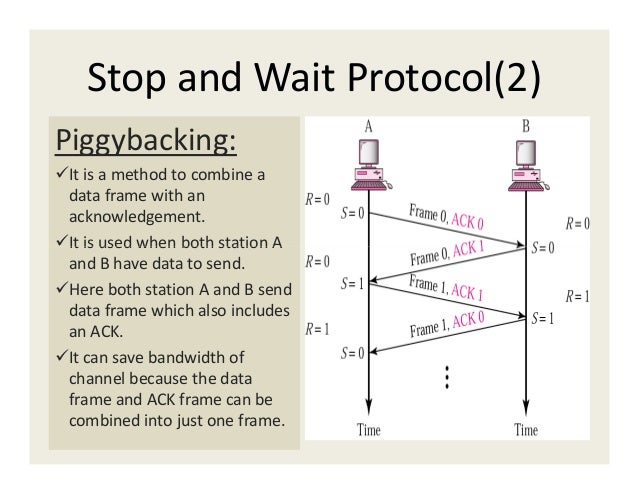1. What happens when you type URL in your browser? Or
What happens when you type www.google.com in your browser?
Ans: Ans1 or Ans2
3. Define Piggybacking?

What happens when you type www.google.com in your browser?
Ans: Ans1 or Ans2
2) Describe the layers of OSI model?
Ans) OSI model stands for Open System Interconnection It is a framework which guides the applications how they can communicate in a network.
OSI model has seven layers. They are listed below,
- Physical Layer (Deals with transmission and reception of unstructured data through a physical medium)
- Data Link Layer (Helps in transferring error-free data frames between nodes)
- Network Layer (Decides the physical path that should be taken by the data as per the network conditions)
- Transport Layer (Ensures that the messages are delivered in sequence and without any loss or duplication)
- Session Layer (Helps in establishing a session between processes of different stations)
- Presentation Layer (Formats the data as per the need and presents the same to Application layer)
- Application Layer (Serves as the mediator between Users and processes of applications).

Ans) In two-way communication, whenever a data frame is received, the receiver waits and does not send the control frame (acknowledgement or ACK) back to the sender immediately.
The receiver waits until its network layer passes in the next data packet. The delayed acknowledgement is then attached to this outgoing data frame.
This technique of temporarily delaying the acknowledgement so that it can be hooked with next outgoing data frame is known as piggybacking.
4. What is the difference between Firewall and Antivirus?
Ans) Firewall and Antivirus are two different security applications used in networking. A firewall acts as a gatekeeper which prevents unauthorized users to access the private networks as intranets. A firewall examines each message and blocks the same which are unsecured.
Antivirus is a software program that protects a computer from any malicious software, any virus, spyware, adware etc.
Note: A Firewall cannot protect the system from virus, spyware, adware etc.
5. How many types of modes are used in data transferring through networks?
Ans) Data transferring modes in computer networks are of three types. They are listed below,
1) Simplex: Data transferring which takes place only in one direction is called Simplex. In Simplex mode, the data gets transferred either from sender to receiver or from receiver to sender.
Eg: Radio signal, the print signal given from computer to printer etc.
2) Half Duplex: Data transferring can happen in both directions but not at the same time. Alternatively, the data is sent and received.
Eg: Browsing through the internet, a user sends the request to the server and later the server processes the request and sends back the web page.
3) Full Duplex: Data transferring happens in both directions that too simultaneously.
Eg: Two lane road where traffic flows in both the directions, communication through telephone etc.
Comments
Post a Comment